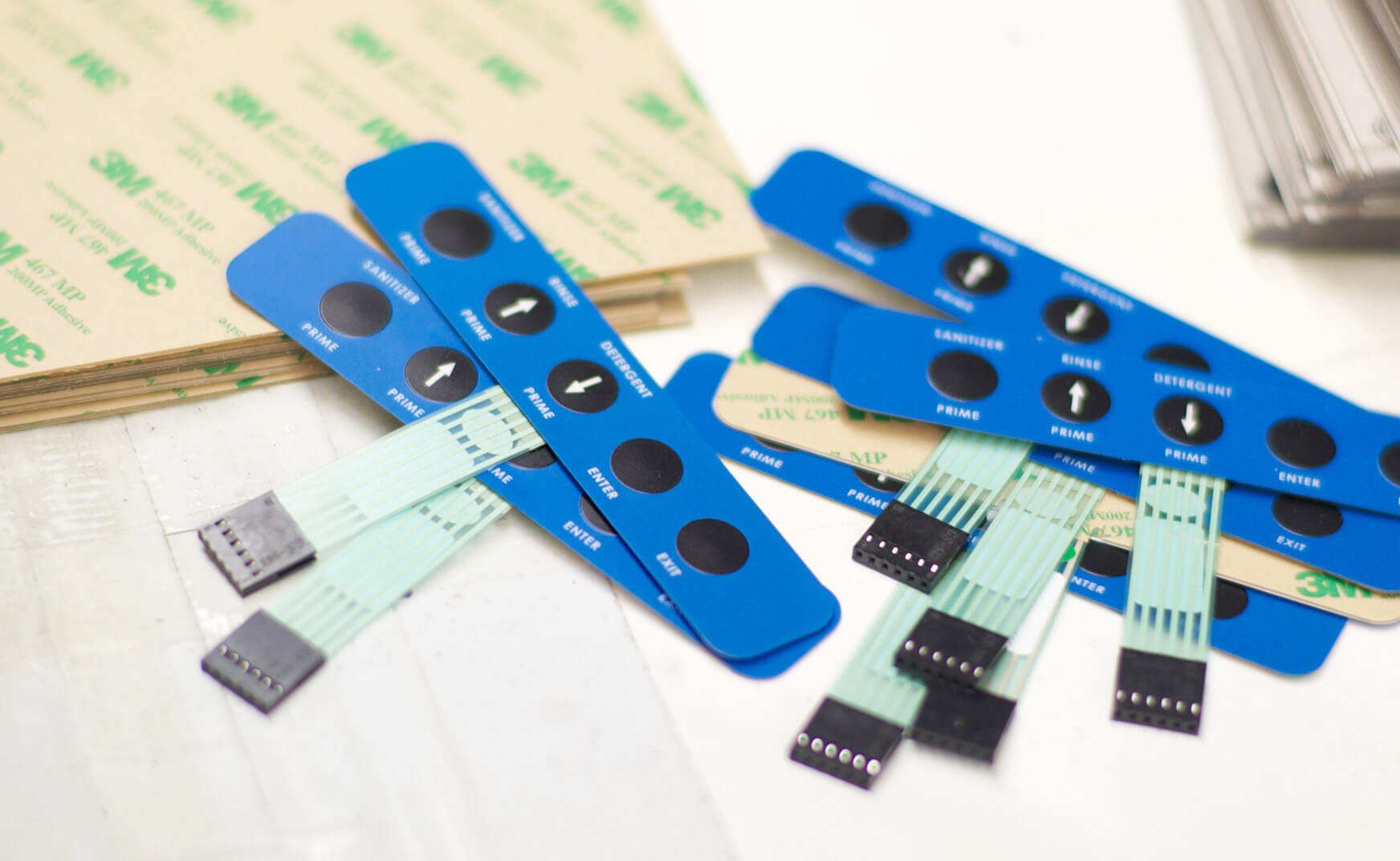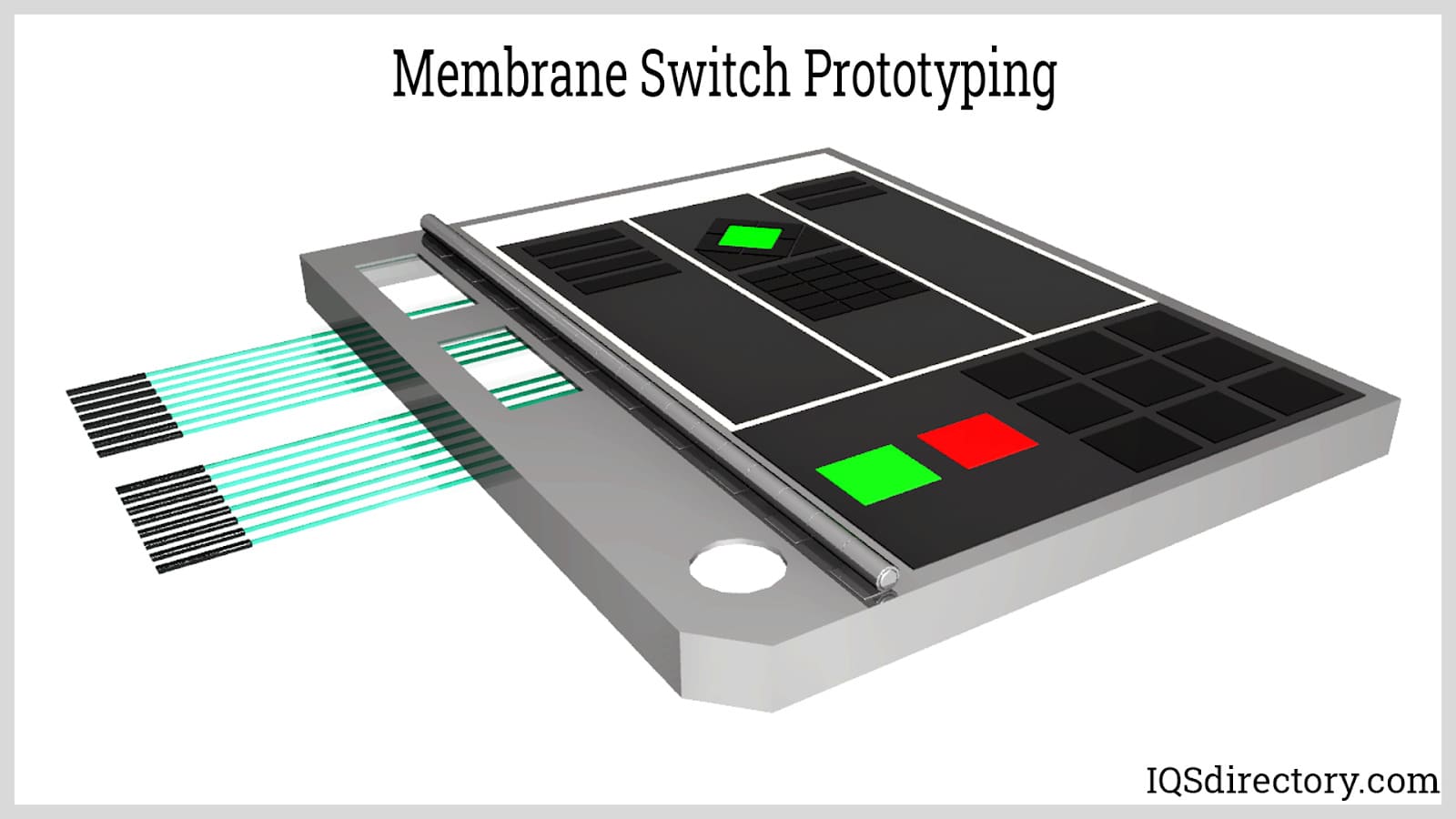Don’t ignore the value of working with a proven membrane switch manufacturer for prototypes.
Don’t ignore the value of working with a proven membrane switch manufacturer for prototypes.
Blog Article
Everything About Membrane Layer Switch Over: Comprehending Its Style and Performance
When you think about the control user interfaces in modern tools, membrane buttons commonly come to mind. Allow's explore what sets membrane switches over apart from other control systems.
What Are Membrane Layer Buttons?

Their smooth nature makes them very easy to tidy and resistant to dirt and dampness, a crucial attribute in lots of environments. Membrane switches can also be personalized regarding shape, size, and graphics, permitting manufacturers to create one-of-a-kind user interfaces tailored to particular products. Plus, they're light-weight and thin, which assists in minimizing the overall bulk of gadgets. Generally, membrane buttons play a significant role in improving user experience across a wide range of applications.
How Membrane Layer Changes Job
When you push a key on a membrane switch, it triggers an uncomplicated yet reliable device. membrane switch manufacturer. The top layer, typically made of flexible material, pushes down onto a conductive layer underneath it.
You'll notice that the responsive comments varies based on the switch design, providing either a soft click or an extra pronounced action. When you launch the key, the membrane layer go back to its original position, resuming the circuit and quiting the signal. This process occurs virtually immediately, making sure a receptive customer experience.
Membrane switches are popular due to their sturdiness and resistance to dust and dampness, making them ideal for various applications, from family appliances to clinical tools. Recognizing this procedure aids you appreciate their prevalent use.
Key Parts of Membrane Buttons
Comprehending the essential parts of membrane layer buttons is essential for realizing their capability and design. At the core, you'll find the visuals overlay, which provides the visual user interface for users. Under that, there's a spacer layer that divides the circuit layers, ensuring that they do not make get in touch with up until pressed. The circuit layer is where the magic happens; it consists of conductive traces that finish the circuit when you push the button. One more crucial aspect is the glue support, enabling the button to comply with surfaces safely. Lastly, the safety layer guards versus environmental factors and wear, extending the switch's life expectancy. Each component plays a significant function in making certain reliable performance and customer interaction. By recognizing these parts, you'll acquire insight right into exactly how membrane switches over operate and their importance in various applications.
Products Used in Membrane Change Style
The performance and durability of membrane layer changes heavily rely on the materials utilized in their style. You typically encounter polyester and polycarbonate as main substratums as a result of their outstanding toughness and adaptability. These materials withstand scratches and chemicals, making them excellent for requiring settings.
The conductive layers frequently utilize silver or carbon, picked for their integrity and conductivity. membrane switch manufacturer. Silver provides premium performance, while carbon is an affordable choice. For the overlay, you could think about a matte or glossy finish, relying on your visual requirements and customer experience
Adhesives play a necessary duty too; they bond layers safely and ensure long life. Make sure to select adhesives that endure ecological aspects like temperature level and humidity. Finally, do not ignore the value of a great printing strategy for graphics, as it boosts both performance and find out here now visual allure. Choosing the best products will ensure your membrane button stands the examination of time.
Layout Considerations for Membrane Layer Buttons
While making membrane switches, it's crucial to take into consideration numerous aspects that influence their performance and user experience. Begin by concentrating on the layout and switch size; make particular they're user-friendly and simple to navigate. Consider the tactile responses you want to supply-- will individuals need an obvious click or a softer touch? Additionally, think of the materials you'll make use of, as they'll impact resilience and appearances.
Do not neglect the graphic design; clear labeling and shade comparison are substantial for presence. Validate your design accommodates ecological factors, like wetness or temperature level variants, which could influence performance. Keep in mind the importance of testing models with actual users to gather responses and make required changes. This repetitive process assists you fine-tune the layout, verifying it satisfies both useful and visual requirements successfully. By thoroughly taking into consideration these components, you'll create a membrane switch that read improves use and complete satisfaction.
Applications of Membrane Switches
Membrane layer buttons are functional parts discovered in numerous applications, from industrial devices to consumer electronic devices. You'll see their impact in devices that require sturdy interfaces and in tools that benefit from sleek styles. Recognizing these applications assists you value the functionality and practicality of membrane buttons in day-to-day innovation.
Industrial Devices Usage
When you're looking to boost the capability of industrial tools, membrane switches supply a trustworthy solution that integrates sturdiness with straightforward layout. These buttons are best for extreme settings, providing resistance to dirt, moisture, and chemicals. Accept membrane buttons to enhance your operations and boost overall performance.
Customer Electronic Devices Assimilation
In the domain name of consumer electronic devices, membrane buttons play a crucial role in improving customer interaction and tool capability. You'll find them in tools like microwaves, remote controls, and pc gaming consoles, giving a seamless means to connect with modern technology. Their streamlined layout permits easy assimilation right into numerous items, making controls user-friendly and user-friendly. With their capacity to integrate graphics and backlighting, you can take pleasure in a modern-day visual that complements the device's overall look. Membrane switches additionally guarantee sturdiness and resistance to dust and wetness, expanding the sites life-span of your electronic devices. By picking membrane layer buttons, you improve not simply the capability but likewise the style of your tools, making daily interactions smooth and delightful.
Benefits and Negative Aspects of Membrane Layer Buttons
While membrane switches offer an array of advantages, they additionally come with some downsides that you need to take into consideration. One considerable benefit is their small layout, making them excellent for space-constrained applications.

Membrane layer buttons can have a much shorter lifespan compared to mechanical switches, especially under heavy usage. They can likewise be less tactile, which might influence customer feedback throughout operation. Stabilizing these pros and cons will assist you establish if membrane layer buttons are the ideal fit for your task.
Regularly Asked Questions
How Lengthy Do Membrane Layer Switches Normally Last?
Membrane layer switches over commonly last between 5 to 10 years, depending on usage and ecological conditions. You'll desire to assess aspects like wear, direct exposure to wetness, and temperature changes to evaluate their longevity properly.
Can Membrane Changes Be Personalized for Certain Styles?
Yes, you can customize membrane layer buttons to fit particular layouts (membrane switch manufacturer). You'll have the flexibility to choose colors, forms, and layouts that match your job's needs, guaranteeing they mix flawlessly with your general visual
What Is the Cost Variety for Membrane Layer Change Manufacturing?
The price array for membrane layer button production generally drops in between $1 and $10 per device, depending on factors like design intricacy, quantity, and materials. You can obtain quotes from suppliers to locate the finest option.

Are Membrane Layer Switches Waterproof or Resistant?
Membrane buttons can be made to be waterproof or immune, depending upon products utilized and building and construction methods. If you need them for damp atmospheres, ensure you define those needs throughout the layout procedure.
Exactly How Do Membrane Layer Changes Compare to Conventional Switches?
Membrane buttons are generally thinner and extra adaptable than typical switches, providing a sleek layout. They're commonly easier to clean up and integrate, but may not supply the responsive comments you're used to with mechanical alternatives.
Conclusion

Report this page